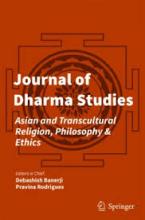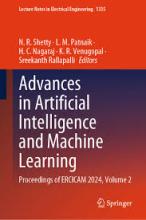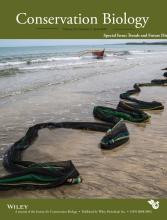Publications

|
Sangeetha Menon Are Plants Conscious? Vegetal ‘Being’ in the Caraka Saṁhitā https://link.springer.com/article/10.1007/s42240-025-00231-1 Gautama, P.A., Menon, S. Are Plants Conscious? Vegetal ‘Being’ in the Caraka Saṁhitā. DHARM (2025). https://doi.org/10.1007/s42240-025-00231-1 This study discusses notions of plant consciousness within the classical Ayurveda text, the Caraka Saṁhitā (CS) and its ideas on vegetal ‘being’. Drawing extensively from Cakrapāṇidatta’s commentarial gloss on the CS, the Āyurvedadīpikā, it begins by pointing to two frequently conflicting conceptualizations and positions ascribed to plants within the text: (a) plants as material agents of therapy and (b) plants as sentient and conscious ‘beings’. Then, drawing upon the CS’s suggestion that the property of consciousness can be inferred from sentience, the paper investigates Cakrapāṇidatta’s position that plants are not only sentient but also capable of some degree of self-awareness. It then proceeds to ask whether plants may be considered as possessing ‘minds’, situating this discussion within the broader epistemic framework of the CS’s theory of sparśa. In conclusion, the study discusses the implications and challenges of such notions of plant being in view of the text’s overwhelming dependence on a herbal pharmacopeia. |

|
Sharada Srinivasan Coastal Tamil urn burial sites and Harappan links: Wrought in iron? http://eprints.nias.res.in/2992/ Srinivasan, Sharada (2025) Coastal Tamil urn burial sites and Harappan links: Wrought in iron? Sasanam Journal, 11. pp. 23-26. The writeup explores the implications of the recent early AMS dates of coastal Iron Age urn burial sites of Tamil Nadu. |

|
LM Patnaik Advances in Artificial Intelligence and Machine Learning:Proceedings of ERCICAM 2024, Volume 2 https://link.springer.com/book/10.1007/978-981-96-3105-6 Shetty, N. R., Patnaik, L. M., Nagaraj, H. C., Venugopal, K. R., & Rallapalli, S. (2025). Advances in Artificial Intelligence and Machine Learning: Proceedings of ERCICAM 2024: Vol. 2. Springer.https://doi.org/10.1007/978-981-96-3105-6 |

|
LM Patnaik Advances in Communication and Applications :Proceedings of ERCICAM 2024 https://link.springer.com/book/10.1007/978-981-96-0165-3 Shetty, N. R., Patnaik, L. M., Nagaraj, H. C., Venugopal, K. R., & Nalini, N. (2025). Advances in communication and applications: Proceedings of ERCICAM 2024. Springer. https://doi.org/10.1007/978-981-96-0165-3 |

|
Sisir Roy Darkmatter, Supersolidity and Possible Implications https://ipipublishing.org/index.php/ipil/article/view/216 Roy, S., & Roy, M. (2025). Darkmatter, Supersolidity and Possible Implications. IPI Letters, 3(3). The existence of new state of matter called super solidity has been verified in recent experiment in Italy. In 2008 Roy et al proposed that this new state of matter may be a candidate for Dark matter whose possible implications are elaborated in this publication. |

|
Meera Viswanath Endemic architectural forms of Malabar and South Canara: The role of building material in shaping megaliths and temples https://or.niscpr.res.in/index.php/IJTK/article/view/12132 Viswanath, M. (2025). Endemic architectural forms of Malabar and South Canara: The role of building material in shaping megaliths and temples. Indian Journal of Traditional Knowledge (IJTK), 24(5), 487-499. |

|
M B Rajani Regulation Boundaries for Preservation of Cultural Heritage Sites https://link.springer.com/chapter/10.1007/978-981-96-0718-1_3 Rajani, M.B. (2025). Regulation Boundaries for Preservation of Cultural Heritage Sites. In: Nayak, S. (eds) Policy Recommendations for Sustainable Development, Volume 2. NIAS Policy Briefs. Springer, Singapore. |

|
Sayan Banerjee Introduction: Trends and Future Directions in The Conservation Social https://conbio.onlinelibrary.wiley.com/doi/10.1111/cobi.70011 Vercammen, A., Banerjee, S., Clifton, K., Selinske, M., & Sandbrook, C. (2025). Trends and future directions in the conservation social sciences. Conservation Biology, 39(2), e70011. This is an introduction to the special issue and details out the emergent themes from the special issue. |
